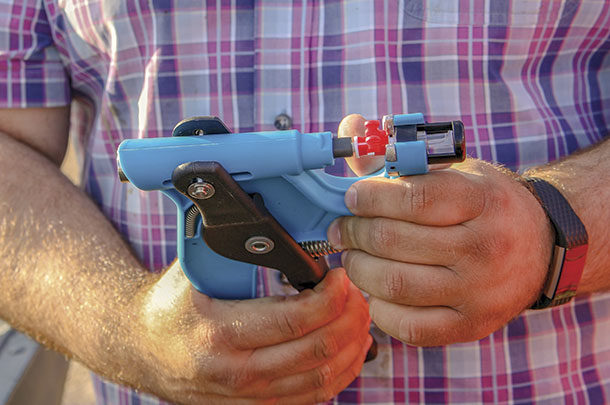Producers using DNA tests to manage their cow herds now have futuristic new tools to speed processing during routine cattle handling.
For example, new tissue collection units need mere seconds per animal to collect DNA – where older DNA sampling with blood cards or hair follicles are often slower and messier.
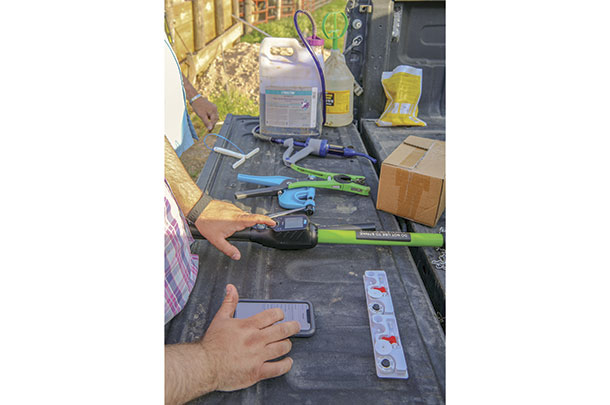 DNA collection is done at the same time cattle are handled for other purposes. Getting organized speeds processing while the animal is in the chute. Photo courtesy of Neogen.
DNA collection is done at the same time cattle are handled for other purposes. Getting organized speeds processing while the animal is in the chute. Photo courtesy of Neogen.Tissue units seal out grime, organic materials and cross-contamination between animals that would compromise DNA quality. The process is done while an animal is restrained in a head gate with minimal fuss or added stress.
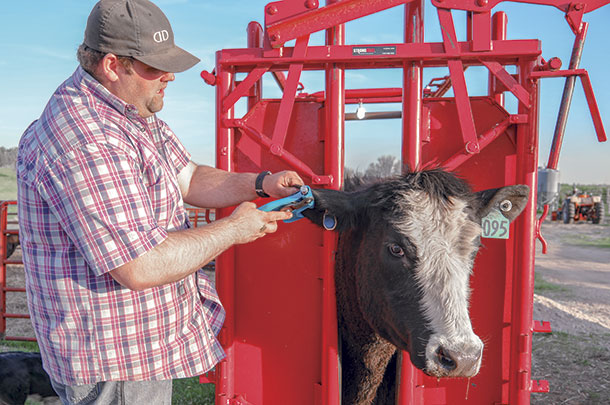 A quick squeeze deposits a small tissue sample from the ear into a vial that is uniquely barcoded and filled with a preservative. Photo courtesy of Neogen.
A quick squeeze deposits a small tissue sample from the ear into a vial that is uniquely barcoded and filled with a preservative. Photo courtesy of Neogen.The tools also can be the basis for integrated digital recordkeeping. The system approach uses unique ID numbers on the tissue units that are paired with matching sets of animal ID tags, either visual or RFID.
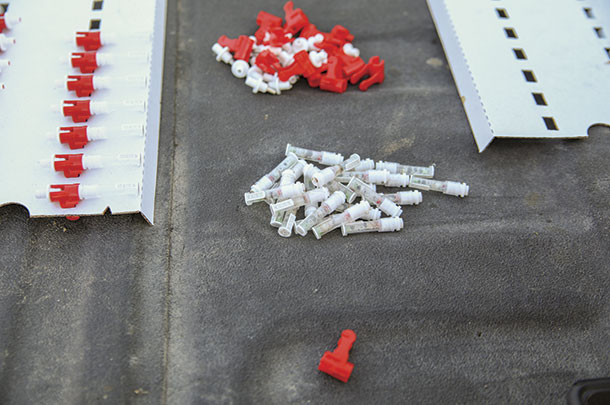 Keeping the units organized after collection is a convenient step. Photo courtesy of Neogen.
Keeping the units organized after collection is a convenient step. Photo courtesy of Neogen.For instance, animal ID can be captured at chuteside with an electronic ID (EID) reader. A reader wand detects the electronic tag in the animal’s ear and records the unique ID. The wand is linked via Bluetooth to a mobile phone application. This same number is coded on the tissue sample vial.
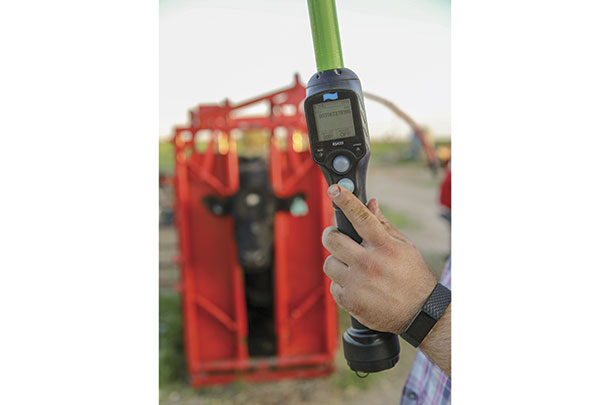 A reader wand picks up the signal from an electronic ID tag in the animal’s ear. Photo courtesy of Neogen.
A reader wand picks up the signal from an electronic ID tag in the animal’s ear. Photo courtesy of Neogen.The phone holds the information, lets the producer enter other notes, such as weight, hip height, body condition score and animal health inputs, and stores the data until it is convenient to upload to a computer or order DNA tests.
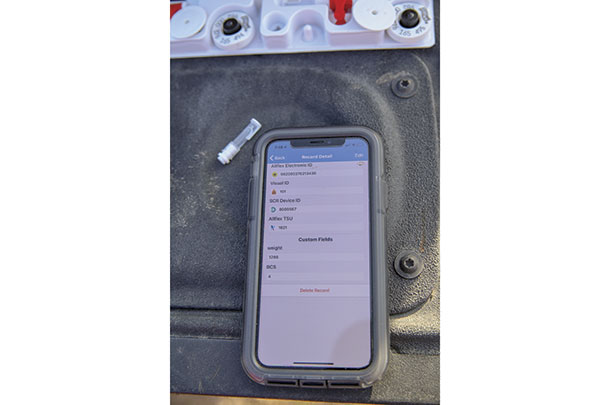 The reader wand sends a signal to a smartphone app, recording the animal ID and letting the producer quickly enter other data. Later, DNA tests can be united with animal data using a common ID number. Photo courtesy of Neogen.
The reader wand sends a signal to a smartphone app, recording the animal ID and letting the producer quickly enter other data. Later, DNA tests can be united with animal data using a common ID number. Photo courtesy of Neogen.Similarly, tissue vial barcodes can be scanned and cross-referenced to matching visual eartags. This scanner system also uses a smartphone via Bluetooth.
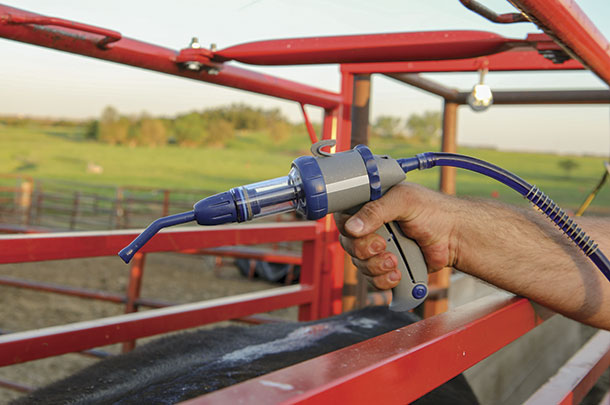 Other processes, such as DNA test, vaccine, dewormer or fly control, can also be recorded at the time of processing. All told, DNA tissue sampling took only 10 seconds per head during the process. Photo courtesy of Neogen.
Other processes, such as DNA test, vaccine, dewormer or fly control, can also be recorded at the time of processing. All told, DNA tissue sampling took only 10 seconds per head during the process. Photo courtesy of Neogen.This makes it easy to integrate animal ID, observation and performance data, DNA profiles and more quickly analyze animal records.
